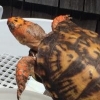Huntsville, Alabama. You are in the 2nd best area in the world in terms of diversity of f/w fish species, 2nd only to the Amazon basin. Excellent planning there on your part. 
Some good advice has already been posted.
There are two excellent fishes of Alabama books. Get one or both. Use them for window-shopping. In another thread, Gerald Potten just posted info that he has copies for sale of "American Aquarium Fishes" by Goldstein, Harper and Edwards. While that book has been criticized by some, its focus on native fish with aquarium potential, and collection of breeding info, is unique. (Edit ==>). Plus the Peterson's Field Guide to Freshwater Fishes is a std reference you'll need if you roam out of state.
Waders are pretty much optional in Alabama most of the year, unless you are doing long stints in the water. I was in mid- and north Alabama the weekend before last. With waders near Birmingham, I was comfortable. In shorts, two hours was enough to get chilled, but the added comfort and freedom of movement was worth it, for me. When I got to north Alabama, I left the waders in the vehicle, and was good for 60-90 minutes. And it's still relatively early in the spring.
In MOST states, minnow and other small fish are regulated as bait, and there's relatively few restrictions, as long as you are taking them for personal use, and are not selling any commercially. You do need a standard recreational fishing license. Check the Alabama regulations for details. in MOST states, you can keep gamefish, but you usually have to catch them with hook & line, not any kind of net. It's not legal to keep ANY small fishes in Tennessee any more. As a non-commercial fisher person, in general there are very few regulations or permits required regarding transporting native fish across state lines. However, some states are cautious about introducing potentially invasive species, and have regulations.
Some kinds of fish, like fast minnows, are very hard to catch single-handedly with a dipnet. (Or a 4ft seine.) So you have to gang up to with other crazy people and use a seine. Which is also an excellent way to meet up with people who are more knowledgeable about the local fishies in an area, and learn how to identify the various species.
Although the odds are not high in most parts of the country, there is some risk that you could go out and inadvertently catch some rare or endangered (state or federally listed) species by random luck. North Alabama has some such species. For that reason, the NANFA recommendation/policy is that you should not take home any fish if you don't know what it is. Due to the difficulty of identifying some species, and especially many juvenile fish, that advice is not easy for professionals to follow all the time, let alone amateurs. My personal practice is to do enough study beforehand that I have a decent idea what endangered species are in a given drainage, and what they generally look like. If I catch anything that looks suspicously like one of the prohibited species, I will either just release it immediately, or take a quick in-hand photo and then let it go. So for example, if I catch an interesting madtom, the ID of which I am not certain, but there's no prescribed madtoms in the area, I'd feel it was okay to take that one home for further study. (However, be aware that on the NANFA forums, this "rule" is strictly interpreted. If you request help with an ID of a fish@home, you will be given a very hard time because you took it without knowing exactly what it was, even if it's clearly of a family/genus that has no at-risk species in the area where you caught it. If you want ID help on the NANFA boards, take a few in-focus stream-side photos, and release the fish. If it turns out to be something safe, you can come back again at another time.)
Another NANFA policy/recommendation you should observe most strictly is "if a fish has been in an aquarium, it must NEVER go back to the wild." Even to the exact spot where it was caught. That is to prevent the introduction of diseases etc from gear or captive populations, which may built up some immunity, into the wild.
There are a few aquaculturists who specialize in native fish. I won't name them here for fear of overlooking someone who is a friend of NANFA. Some of the fish for sale are raised, and some are wild-caught. Given the time & effort involved, prices seem reasonable to me. Native fish are often listed on Aquabid as well. Although I would much rather "catch my own" if possible, it's fun and gives one an extra appreciation for the fish if you know where it comes from, something about its life history, etc.
Finally, in regards to the specific native fish that have caught your eye:
- swamp darter - not found in the immediate Huntsville area, although you would not have to drive far to find some. Compare to rainbow darter, which is local. (e.g. Paint Rock River.) The later is flat-out gorgeous, is a great personality fish, adapts well to aquarium life. Most quickly learn to eat flake food, although an all-flake diet probably would not be great. A crown prince of fishes.
- bluefin killie - very very nice fish. Ubiquitous in Florida, but just barely makes it into Alabama, south of Dothan.
Welcome !












